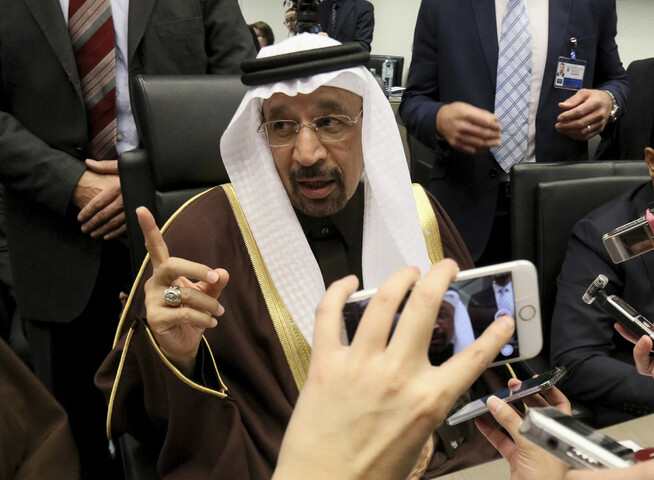was scheduled to Opecs secretary general Muhammad Sanusi Barkindo meet the press on Wednesday afternoon.
It would he do together with Qatars energy minister Mohammed Bin Saleh Al-Sada, who is the president of the 171. ordinary Opec meeting in Vienna.
the Press conference is postponed, but the organisation is expected to confirm that the 14 members agree to cut oil production to 32.5 million barrels per day.
reports Bloomberg, which refers to the delegates at today’s meeting. The information is so far not confirmed from Opecs page.
oil prices rise
the News from Vienna have affected both currencies, oil prices and stock markets.
the price of oil is up over seven percent in the course of the day, and trades to over 50 dollars a barrel from below 48 dollars a barrel in the morning hours.
the Rise in oil prices has led to that the Norwegian krone has strengthened against both the dollar and the euro in the course of the day. Wednesday afternoon is a dollar worth 8,51 million.
Opec should cut production by around 1.2 million barrels per day to 32.5 million barrels per day, according to Bloomberg. The agreement will also involve cuts of 600,000 barrels a day from countries that are not in Opec, writes the news agency.

IMPORTANT MEETING: the price of oil has risen much Wednesday, on rumours that Opec countries would agree to cut oil production. This is Saudi Arabia’s oil minister Khalid Al-Falih.
Arguing about the distribution
the Countries were in september agreed to cut to a level of between 32.5 million and 33 million barrels per day, and the distribution of the cuts between the countries has been the central theme in the negotiations since.
Among other things, Iran and Iraq, both of which are about to increase production significantly, been skeptical of the to limit or cut their production.
higher oil prices will increase the incomes of oil producers both in the middle East, the USA and Norway, and make them better able to finance investments in future production.
Fears skvis
If the sharp fall in investment in the last two years continues, it can lead to that the production is much lower than the demand around 2020, according to The international energy agency, IEA.
Then the prices can be sky-high.
Until further notice, it is still too much oil in the market, and U.s. oil producers are standing by the pumps if the price should rise.
most oil producers in the middle East have large budget deficit and must borrow money to finance its expenditure.
They therefore want a higher oil price, and that they can get to by cutting production.
Saudi Arabia will need around 92 dollars a barrel to balance its budget, while Kuwait, which is the best way in the middle East, needs an oil price of 57 dollars a barrel to get in balance, according to analysts at Wood Mackenzie.
oil income constitutes 90 percent of the revenue to the saudi government, and these fell by 120 billion dollars, or 54 per cent between 2014 and 2015, according to Wood Mackenzie.
More questions remain
A number of questions remain after Opecs agreement. One of them is whether the Opec countries will do as they have said, or whether they will fall for the temptation to produce more than they have promised.
another question is how quickly american manufacturers can step up their production of shale oil and replace the barrels as Opec cuts.
the Cut may namely be offset by increased american production in the course of half a year’s time, and in addition it will be able to put a damper on global demand, warned IEA chief Fatih Birol earlier this month.
We can well see, with any delay of six or nine months, that the american shale oil will flow out on the market, ” said Birol at a press conference earlier in november.
– This will push down prices, he said.
No comments:
Post a Comment